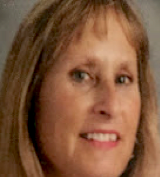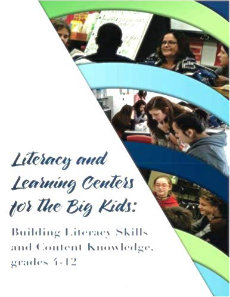Literacy and Learning Centers for the Big Kids
Literacy and Learning Centers for the Big Kids: Building Literacy Skills and Content Knowledge, grades 4-12
By Katherine S. McKnight, PhD
(Engaging Learners, LLC, 2017 – Learn more)

Literacy and Learning Centers for the Big Kids: Building Literacy Skills and Content Knowledge, grades 4-12 is a book I have been waiting for. Most books and articles I have read have been geared towards elementary school teachers and do not always have the tools to meet the needs of the middle schooler.
I have always read through these books and articles and thought, No, this won’t work in our classrooms, or, Maybe I can take this idea and tweak it for our students. Middle and high school teachers – tweak no more!

In between, the book is filled with excellent tips, templates, and examples to help anyone navigate the challenging waters of learning centers in the upper grades. Not only does Dr. McKnight discuss Learning Centers for language arts, but for all academic subjects.
Fitting assessment into learning centers
Teachers often struggle with the assessment piece of Centers. This is where I usually have the most pushback from teachers. They need grades in their gradebooks, and I totally understand this pressure.
The author talks about the importance of setting goals and making sure students understand these goals by articulating them clearly, and then giving students the tools to achieve them and allowing them the time to practice. The author describes in detail how to assess students.
According to McKnight, formative assessments have four distinct attributes:
- Learning Progressions
- Learning Goals and Criteria for Success
- Descriptive Feedback
- Collaboration
She goes on to clearly explain and give examples for each attribute, talks about how to give descriptive feedback, and also discusses connecting the standards to the assessments.
When I turned to the resources at the end of the book, I went onto one of her suggested websites and found some excellent ideas that I immediately shared with all of the teachers in my school. I cannot wait to dive further into these links!
A helpful guide to improving learning centers
I have been using Center work this past year with two of my social studies teachers, but we were learning as we navigated this process. Now that I’ve read Literacy and Learning Centers for the Big Kids, I have many more ideas for improvement to share with my colleagues. I’ll also be recommended this book to them.
Next year will be even better with this book as our guide. My toolkit is filling up with many more ideas on how to structure centers plus ideas for posters, graphic organizers and much more. This is a book that middle and high school teachers definitely need if they want to explore the potential of learning centers!
Janice Rustico was a middle school language arts teacher for 13 years before becoming a literacy coach. Currently she partners with language arts and social studies teachers for literacy and instructional improvement. She resides in Connecticut.



































